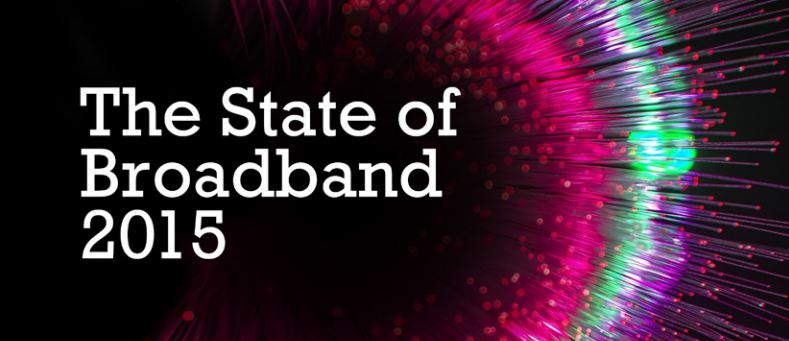Fifty-seven percent of the world’s population lacks access to the Internet. For those who work in the Global South, this number might not seem all that surprising, but a new report released by UNESCO and the International Telecommunications Union has some insights for the future.
The two agencies are the primary members of the Broadband Commission, which just released its 2015 report on the state of broadband penetration (network access and affordability) on a country-by-country basis.
Currently, as expansion of the Internet becomes more difficult outside of urban centers, the most worrying trend is that the growth of Internet adoption and mobile subscriptions has slowed. In fact, the growth of Facebook subscribers is outpacing the growth of the Internet, according to the report.
Internet penetration is at a near saturation point in some countries, which means that the growth has slowed mainly in the developing world. Some figures: Internet penetration will be at 35 percent in the developing world, but among the 48 UN-designated Least Developed Countries (LDCs), more than ninety percent lack access to the Internet.
The annual report evaluates network access and affordability of broadband Internet against a set of key advocacy targets established by the Commission in 2011, which include objectives like normalizing universal access laws and setting target dates for Internet use in developing countries.
This issue has garnered much attention over the last few years. Earlier this year, Internet access hit the three billion user mark, soon followed by campaigns for connecting the next billion online. But many see this as falling below the mark. In fact, the targets set forward by the Commission indicate that by 2015, Internet user penetration should reach 60 percent worldwide—well below the current numbers.
Some key takeaways from the report:
- The digital divide is changing as technologies evolve. For instance, household Internet access in developed countries has reached near-saturation—but that level is at 34 percent in the developing world. In addition, the gender gap in Internet adoption leaves us with an estimated 200 million more men online than women as recently as 2013.
- Mobile broadband is the fastest-growing technology in history. From the launch of mobile broadband technology, it took only five years to achieve one billion users—compare that with thirteen years for Google users to hit one billion. And yet, mobile growth has slowed.
- Broadband is becoming more affordable, as fixed broadband prices as a share of GNI per capita have dropped by 65 percent on average worldwide.
This report is a must-read for media development field, as the growth of the Internet will undoubtedly play a key role in not only technical capacity of media around the world, but will also have implications for the enabling environment.


Comments (0)
Comments are closed for this post.